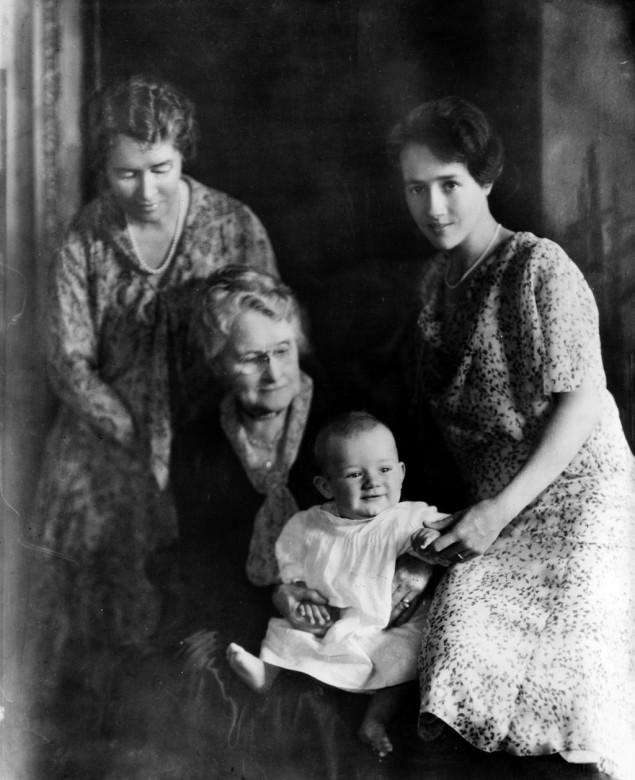In the quiet suburbs of Hopewell, New Jersey, an unease settled over the landscape like a thick fog in the spring air. The date was March 1, 1932, and the nation had barely begun to recover from the Great Depression when the news broke, sending shockwaves through American society: Charles Lindbergh, the famed aviator and American hero, had become a father to a chilling tragedy. His infant son, Charles Augustus Lindbergh Jr., had been abducted from the family home, shattering the illusion of safety and normalcy that once enveloped the household. Here sprawled a case that would capture the imagination of the public and the scrutiny of law enforcement, spiraling into one of the most notorious criminal investigations in American history.
What followed was a tale woven with intrigue, deception, and a harrowing quest for justice. As investigators chased leads that seemed to twinkle like stars in a darkened sky, the story unfurled across newspapers and radio waves, drawing a captivated nation into its web of desperation. Families across America empathized with the Lindberghs, their hearts heavy with grief and concern, while others saw the opportunity for sensationalism, each story layered with a mix of hope and horror. This was not just a crime; it was a cultural phenomenon that raised questions about privilege, media influence, and the very fabric of American life.
As we delve into this historical enigma, we will explore the labyrinthine twists and turns of the investigation, scrutinize the key players involved, and attempt to decipher the enduring mysteries that still cling to the case like a shadow. The Lindbergh baby kidnapping remains a haunting reminder of the fragility of innocence and the dark undercurrents of a society grappling with fear and fascination. Join us as we unravel the threads of this tragic tale, seeking to illuminate the truths obscured over the decades in the search for one lost child.
Table of Contents
- The Historical Context of the Lindbergh Kidnapping and Its Societal Impact
- Key Players in the Unfolding Drama: The Lindbergh Family and Their Adversaries
- The Investigation Unveiled: Techniques and Missteps of Law Enforcement
- Legacy and Lessons Learned: Reflections on Crime, Media and Public Response
- Closing Remarks
The Historical Context of the Lindbergh Kidnapping and Its Societal Impact
The kidnapping of Charles Lindbergh Jr. on March 1, 1932, shook the very foundations of American society, bringing to light the vulnerability of even the most prominent figures. Charles Lindbergh, an aviation hero, and his wife, Anne Morrow Lindbergh, found themselves ensnared in a nightmare that would not only impact their lives but would also reverberate throughout the nation. The event transpired against a backdrop of economic hardship during the Great Depression, a period marked by widespread fear and uncertainty. As news of the abduction spread, it ignited public outrage and sorrow, prompting many to speculate about the safety of their own children and leading to a collective anxiety that swept across the nation.
The media frenzy surrounding the case was immense, as journalists and reporters from all corners of the country flocked to New Jersey to cover the unfolding drama. This incident birthed a new era of sensationalist journalism in America, characterized by the constant race for breaking news and exclusive stories. As the investigation progressed, themes of class, privilege, and justice came to the forefront, revealing stark contrasts between the wealthy elite and the general populace. The public outcry was compounded by instances of unconfirmed information and misleading reports, generating an atmosphere of confusion and speculation. Ultimately, the Lindbergh kidnapping not only intensified debates about crime and punishment in America but also fostered a burgeoning sense of national consciousness regarding child safety that would have lasting implications for years to come.
Key Players in the Unfolding Drama: The Lindbergh Family and Their Adversaries
As the world fixated on the harrowing tale of the Lindberghs, the family emerged as both victims and symbols of a greater societal turmoil. Charles Augustus Lindbergh, renowned for his pioneering transatlantic flight, found himself thrust into the limelight for an entirely different reason—one that turned his aspirations into shadows of despair. His wife, Anne Morrow Lindbergh, became a portrait of maternal grief, battling public scrutiny while maintaining a brave facade. Their home in Hopewell, New Jersey, once viewed as a sanctuary, was transformed into a fortress enduring the relentless media siege. The couple’s resilience stood as a testament to their love, but each passing day without their son gnawed at their spirits, unraveling a delicate thread binding their public lives to their personal anguish.
In stark contrast to the Lindberghs’ plight were the myriad of adversaries lurking in the shadows. Among them, the infamous Italian immigrant Bruno Richard Hauptmann emerged as a central figure, accused of perpetrating the heinous crime. His trial became a sensational spectacle, with the courtroom transformed into a stage for theatrical performances of morality and justice, captivating a nation. Meanwhile, the relentless media, encompassing an array of journalists and photographers, sought to exploit the tragedy, often sensationalizing facts and perceptions surrounding the case. The Lindberghs’ battle against their adversaries was not solely against a kidnapper but also against a society hungering for answers amidst a backdrop of fear and fascination.
The Investigation Unveiled: Techniques and Missteps of Law Enforcement
The investigation into the kidnapping of Charles Lindbergh Jr. became a significant exemplar of both the ingenuity and the blunders of law enforcement practices in the 1930s. As soon as baby Lindbergh was reported missing, various law enforcement agencies sprung into action, employing a range of techniques that would later be scrutinized. The investigation involved profiling a wide array of potential suspects, interrogating hundreds, and tracing the ransom notes with fervent intensity. However, certain missteps were glaringly apparent throughout the process. For instance, the use of a traditional ballistic expert was coldly contrasted by the absence of modern fingerprinting techniques, which could have potentially unveiled crucial clues left behind at the crime scene.
The primary means of communication in the case revolved around handwritten ransom notes, which were meticulously analyzed. Law enforcement was eager to decipher the unique symbols and peculiar phrasing, believing they could shed light on the perpetrator’s identity. Yet, the lack of effective collaboration between local police and federal agents led to a chaotic gathering of evidence, further hampering the investigation. Tension between jurisdictions resulted in a fragmented approach, causing critical delays. The following table encapsulates some key techniques and mistakes made during the early investigative phase:
| Techniques Employed | Missteps Made |
|---|---|
| Interrogation of Suspects | Lack of coordinated effort between agencies |
| Analysis of Ransom Notes | Neglecting modern forensic science |
| Public Appeals for Information | Overlapping leads causing confusion |
| Use of Informants | Inconsistent follow-up on tips |
Legacy and Lessons Learned: Reflections on Crime, Media and Public Response
The Lindbergh baby kidnapping stands as a poignant example of the profound interplay between crime, media, and public sentiment in early 20th century America. The disappearance of Charles Augustus Lindbergh Jr., the infant son of famed aviator Charles Lindbergh and his wife Anne Morrow Lindbergh, captivated the nation. In an age where radio and print journalism were burgeoning mediums, the case drew widespread attention, influencing public perceptions of both crime and justice. The extensive media coverage turned the Lindberghs into emblematic figures caught in a harrowing tragedy, sparking a nationwide dialogue about parental responsibility, societal vulnerability, and the horrific reality of crime against children. In this sense, the kidnapping transformed not just the lives of the Lindberghs but also the landscape of American media and its evolving role in shaping public narratives around crime.
In reflection, the aftermath of the kidnapping revealed critical lessons regarding law enforcement practices, the role of media sensationalism, and community response in criminal cases. The Lindbergh case prompted the establishment of the Lindbergh Law, making kidnapping a federal offense, emphasizing the necessity of a unified national approach to such crimes. Moreover, it exposed the potential dangers of media involvement in criminal investigations, particularly as sensationalist coverage could impede ongoing inquiries and generate unjust public scrutiny. As the case unfolded and ultimately concluded with the conviction of Bruno Hauptmann, society grappled with its own fears and myths surrounding crime, highlighting the need for a balanced understanding of law, ethics, and media responsibility in curating narratives that shape public consciousness. The Lindbergh kidnapping thus serves not only as a historical event but as a timeless reminder of the complexities inherent in the relationship between crime, the mechanisms of media, and the lessons continuously learned in the quest for justice.
Closing Remarks
As the sun set on the New Jersey hills in the spring of 1932, the case of the Lindbergh baby stood as a haunting echo of a nation wrestling with its tumultuous spirit. The tragic tale of Charles Augustus Lindbergh Jr. captivated the country, drawing in a cast of characters—from grieving parents and heroic figures to shadowy criminals and relentless investigators. Each thread of this intricate tapestry wove a story filled with hope, despair, and the insatiable quest for justice.
Years would pass, and yet the shadow of the crime would linger in the American consciousness. While justice was ultimately served with the conviction of Bruno Hauptmann, questions remained—was he the lone wolf, or merely a scapegoat in a larger, darker conspiracy? The Lindbergh case continues to reverberate through popular culture and legal discourse, a poignant reminder of a simpler time shattered by profound tragedy.
The kidnapping and its aftermath would reshape public discourse around child safety, national security, and media ethics, ushering in an era where the private lives of individuals, particularly those of public stature, were forever altered by the relentless gaze of the media. The legend of Charles Lindbergh—a man who once seemed invincible after crossing the Atlantic—was marred by an event a mother and father could scarcely fathom.
As we reflect on this historical enigma, we are reminded that some mysteries—no matter how many years may pass—are never fully unraveled. They remain, instead, as chilling chapters in the overarching narrative of human experience, beckoning each generation to ponder the depths of human motives and the stark realities of loss. the haunting legacy of the Lindbergh baby transcends the specifics of its own grief, inviting us to explore the fragility of life, the nature of culpability, and the enduring quest for truth amid the shadows of uncertainty.


